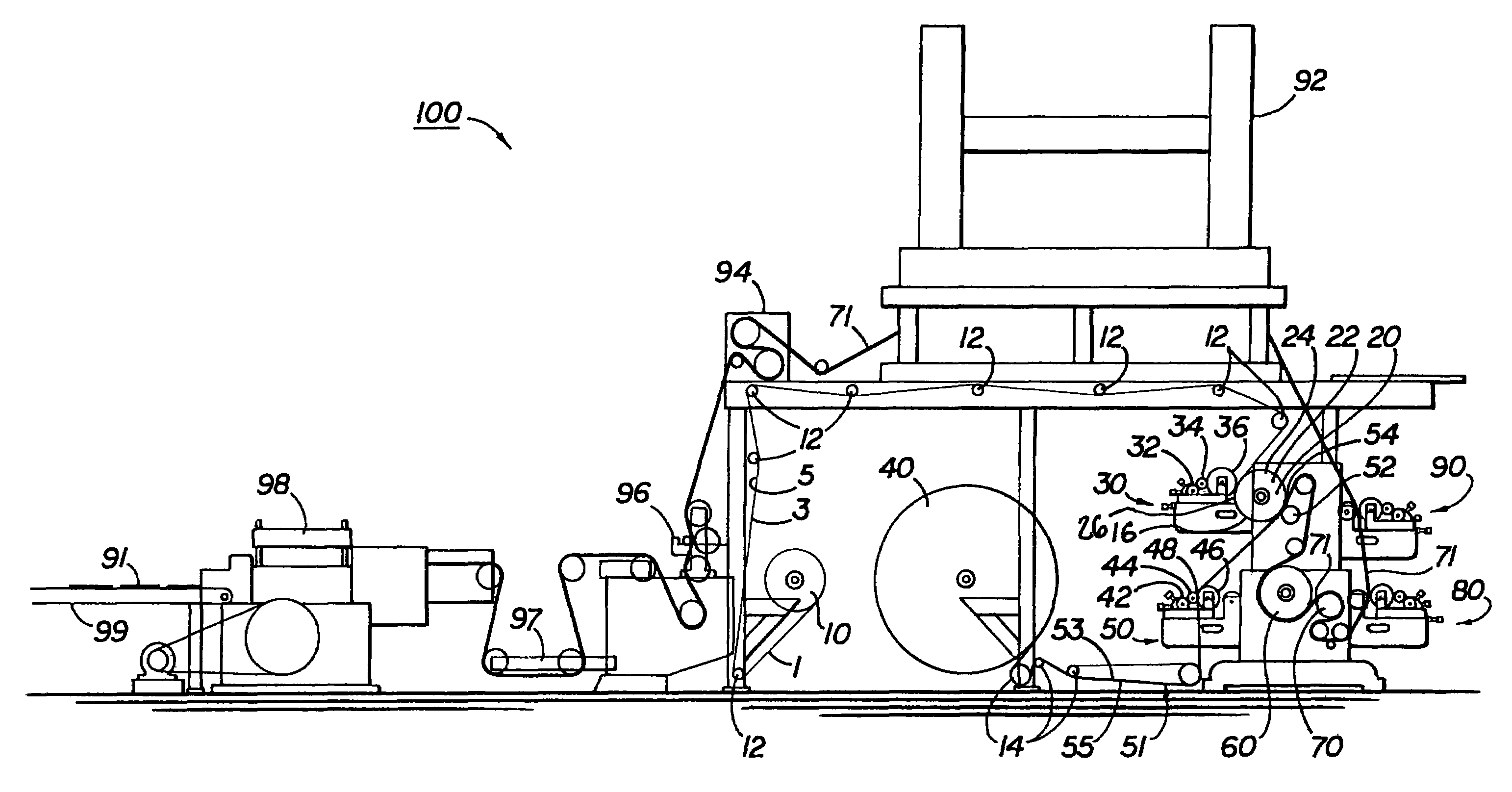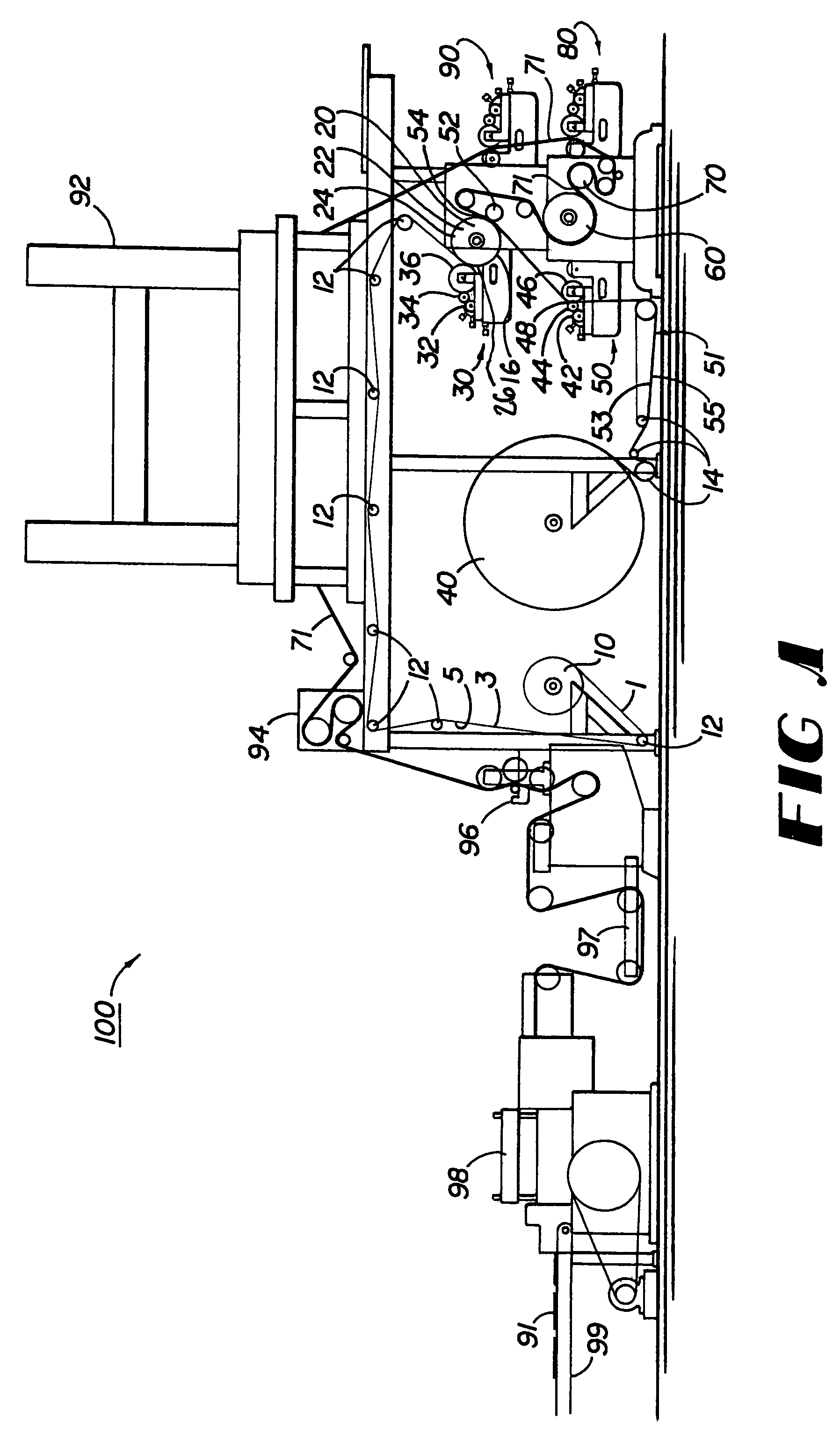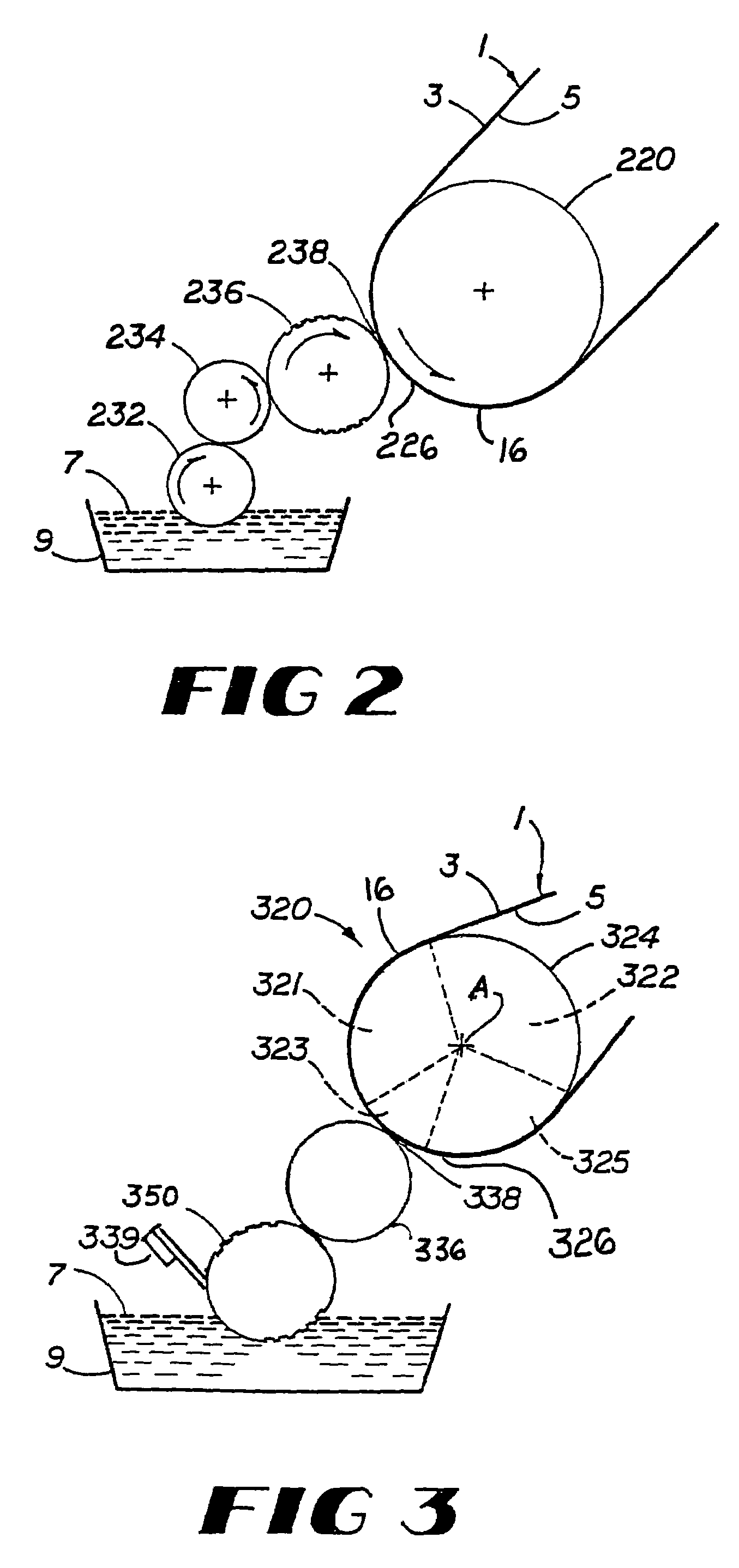Apparatus and method for demetallizing a metallized film
a technology of metallized film and apparatus, which is applied in the direction of pattern printing, printing presses, printing, etc., can solve the problems of high corrosive material handling, inefficient operation, and the type of selective etching method may suffer several problems, so as to speed up the process for rapid assembly line use, avoid undesirable heating of corrosive baths or etchant soaked rollers
- Summary
- Abstract
- Description
- Claims
- Application Information
AI Technical Summary
Benefits of technology
Problems solved by technology
Method used
Image
Examples
Embodiment Construction
[0028]The present invention is more particularly described in the following examples that are intended to be illustrative only since numerous modifications and variations therein will be apparent to those skilled in the art. As used in the specification and in the claims, the singular form “a,”“an” and “the” include plural referents unless the context clearly dictates otherwise. Also, the meaning of “in” includes “in” and “on” unless the context clearly dictates otherwise. Referring to the drawing, like numbers indicate like parts throughout the figures.
[0029]Referring in general to FIGS. 1-5, various embodiments of the system and apparatus for carrying out the method(s) of the present invention are shown. In one embodiment, in particular referring first to FIG. 1, the present invention provides a system 100 for metal removal from or demetallizing a metallized film. In the present invention, the metallized film 1 has a metallized side 3 and an opposite support side 5. For example, a...
PUM
| Property | Measurement | Unit |
|---|---|---|
| temperature | aaaaa | aaaaa |
| temperature | aaaaa | aaaaa |
| temperature | aaaaa | aaaaa |
Abstract
Description
Claims
Application Information
 Login to View More
Login to View More - R&D
- Intellectual Property
- Life Sciences
- Materials
- Tech Scout
- Unparalleled Data Quality
- Higher Quality Content
- 60% Fewer Hallucinations
Browse by: Latest US Patents, China's latest patents, Technical Efficacy Thesaurus, Application Domain, Technology Topic, Popular Technical Reports.
© 2025 PatSnap. All rights reserved.Legal|Privacy policy|Modern Slavery Act Transparency Statement|Sitemap|About US| Contact US: help@patsnap.com



